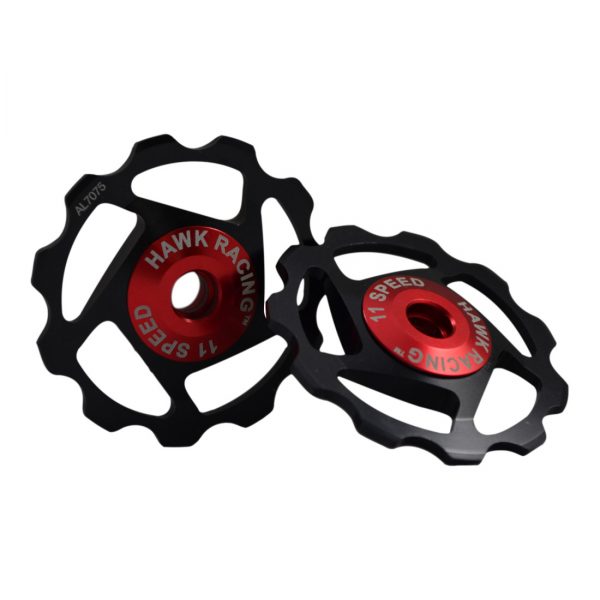Derailleur pulleys, also known as jockey wheels, are small yet crucial components in a bicycle’s drivetrain system. Located in the rear derailleur, they guide the chain as it moves between gears, ensuring smooth shifting and efficient power transfer.
While derailleur pulleys may seem insignificant compared to other components like the chain or cassette, they play a vital role in cycling performance, influencing both speed and efficiency. Here’s a closer look at what they do and why they’re important:
What Derailleur Pulleys Do
A standard rear derailleur has two pulleys: the upper pulley (also called the guide pulley) and the lower pulley (the tension pulley). The upper pulley is responsible for guiding the chain through the derailleur as the rider shifts gears, while the lower pulley maintains chain tension. Together, these pulleys help the derailleur function smoothly, allowing for quick and precise gear changes, which are essential during competitive racing or challenging climbs.
While derailleur pulleys are small, their condition and design significantly affect how efficiently the drivetrain operates. A worn or poorly maintained pulley can increase friction, slow down gear changes, and make the drivetrain less efficient, which can ultimately hamper performance.
How Pulleys Affect Performance
Efficiency and Power Transfer
The efficiency of the drivetrain largely depends on how well the chain moves across the cogs. Derailleur pulleys with lower friction allow the chain to glide more smoothly, reducing energy loss during power transfer from the pedals to the wheels. This is particularly important for competitive cyclists, where even the smallest efficiency gain can translate to better speed and endurance. Riders who want to optimize their performance often consider upgrading to high-quality pulleys, such as ceramic-bearing pulleys, which offer reduced friction compared to standard steel-bearing options.
Shifting Precision
Smooth and precise shifting is key to maintaining speed, especially during climbs, sprints, or technical terrain. Derailleur pulleys in good condition ensure the chain moves seamlessly between gears, reducing the risk of missed shifts or delays. An oversized pulley wheel system (OSPW) can also improve shifting performance by providing more chain wrap around the cassette, which leads to better chain engagement and less chance of skipping or misalignment. This is particularly useful for cyclists tackling varied terrain, where frequent shifting is required.
Durability and Wear
High-quality derailleur pulleys, especially those made from advanced materials like ceramic or carbon, are designed to be more durable than standard pulleys. These pulleys are more resistant to dirt and grime, which can accumulate on the drivetrain and increase friction. As a result, they tend to last longer and require less maintenance. A well-maintained drivetrain, including derailleur pulleys, not only extends the life of the bike’s components but also keeps the bike running at peak performance for longer periods.
Weight Considerations
For performance-focused cyclists, every gram counts. While the weight of derailleur pulleys may seem negligible, some high-end pulleys are designed to be lightweight, contributing to a more efficient overall system. Lightweight materials like aluminum or carbon can shave off precious grams, which can make a difference in competitive racing or long-distance endurance rides.
Derailleur pulleys might be small components, but their impact on cycling performance is significant. By ensuring efficient power transfer, smooth shifting, and reduced friction, derailleur pulleys contribute to overall drivetrain performance. If you’re looking to upgrade, check out our own derailleur pulleys here.
Share this post:


